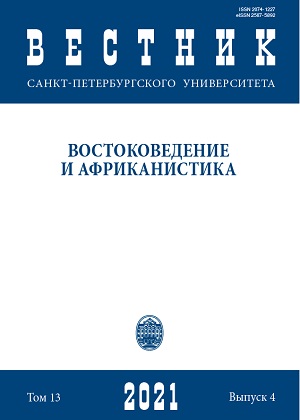Signs of Cultural Significance in the Works of Mo Yan Translated into Russian
DOI:
https://doi.org/10.21638/spbu13.2021.401Abstract
The authors of this article analyze Russian translations of non-translatable linguistic signs in the works of Chinese writer Mo Yan, prize laureate of the Nobel Prize in 2012. In his works, the writer amply uses culturally-bound words and phrases as well as folklore and tales meaningful for Chinese material, social and spiritual culture. Some of them are cultural constants traditionally associated with emotional, axiological and aesthetic values. Mo Yan’s style includes common language, idioms, even swear words alongside vernacular parables and ditties. As a whole, his style itself is the embodiment of Chinese common culture, which presents a seemingly insoluble task for translators — how to translate the non-translatable, to recreate in Russian not just the style but the culture itself. The authors explore both the translators’ solutions and inevitable shifts and losses determined in the process of interaction between the two very different languages and cultures. Particular attention is paid to translators’ solutions for the symbolic functions of Chinese personal names. In addition, complications connected with the transfer of Chinese everyday realia, customs and traditions that appear as important components in the structure of images and contents of Mo Yan’s works are considered. An attempt is made to reconstruct some important components of the intercultural area that emerges in the course of translation from Chinese into Russian.
Keywords:
non-translatability, lacuna, realia, intercultural area, translator’s solution
Downloads
References
Downloads
Published
How to Cite
Issue
Section
License
Articles of "Vestnik of Saint Petersburg University. Asian and African Studies" are open access distributed under the terms of the License Agreement with Saint Petersburg State University, which permits to the authors unrestricted distribution and self-archiving free of charge.





